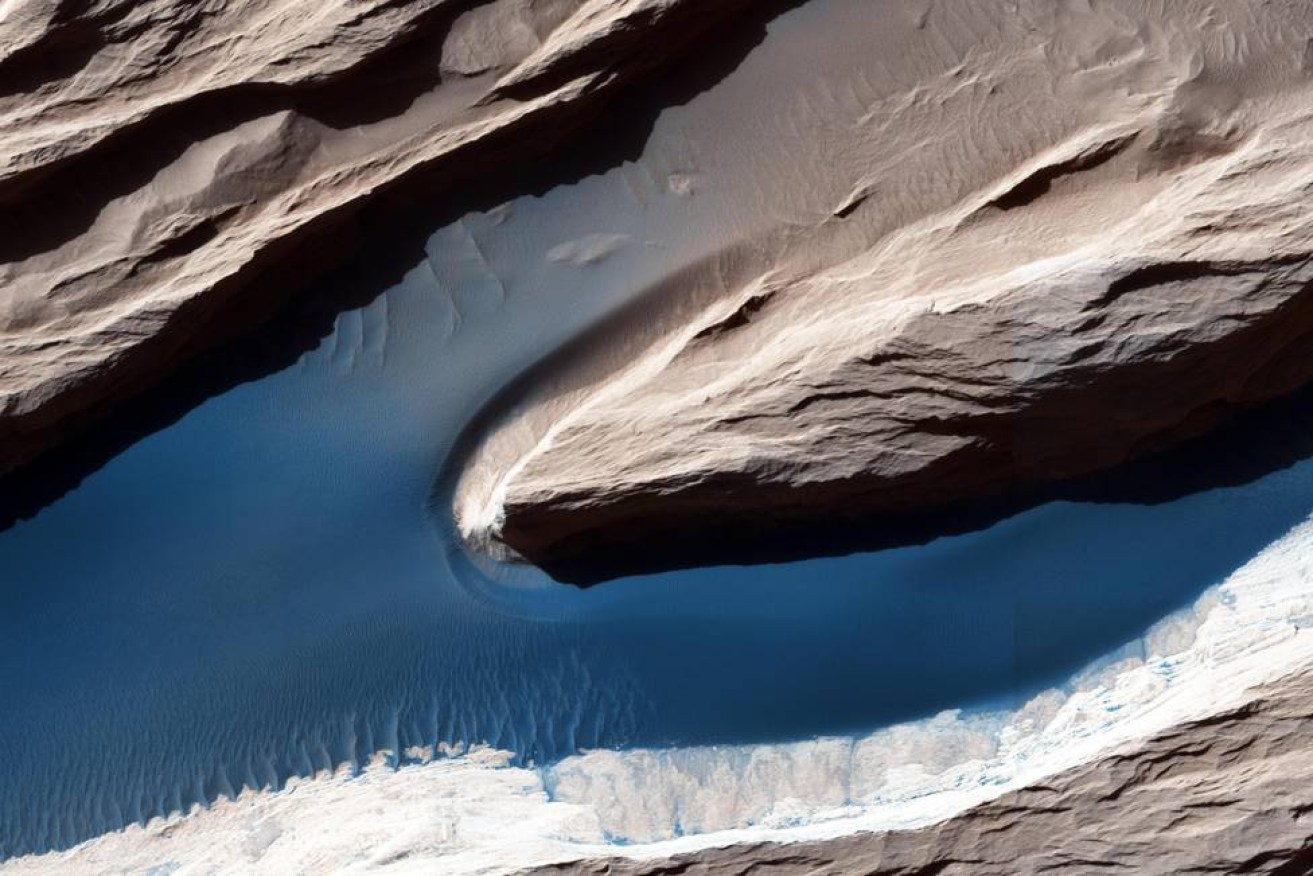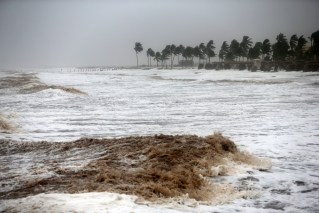NASA says Mars gullies not caused by flowing water

The wind has shaped Mars' surface. Photo: NASA/JPL-Caltech/Univ. of Arizona Photo:NASA/JPL-Caltech/Univ. of Arizona
New NASA research has shown the gullies on Mars were not formed by flowing liquid water.
The data from the Mars Reconnaissance Orbiter released on Monday will allow researchers to narrow down theories about how Martian gullies formed and reveal more details about Mars’ geologic processes, NASA said in a statement.
The gullies are different to another prominent feature of Mars— slopes and streaks called recurring slope lineage (RSL) which are distinguished by seasonal darkening and fading.
Water in the form of hydrated salt was identified at RSL sites in September last year, also using Mars Reconnaissance Orbiter data.
Chemical analysis of dark streaks on the surface of the planet identified the presence of hydrated salts that are the signature of liquid salty water.
But the new research — which focused solely on gullies — found no trace of water, by looking at the gully formation process and adding composition information to previous imaging, NASA said.

Highly incised Martian gullies seen the top image resemble gullies on Earth that are carved by liquid water. Photo: NASA
Researchers from the Johns Hopkins University Applied Physics Laboratory (APL) in Maryland in the US examined high-resolution compositional data from more than 100 gully sites throughout Mars.
NASA said the findings showed no mineralogical evidence of liquid water or its by-products.
The research suggested the gullies could have been formed by the freeze and thaw of carbon dioxide frost.
The findings were published in Geophysical Research Letters.
“On Earth and on Mars, we know that the presence of phyllosilicates — clays — or other hydrated minerals indicates formation in liquid water,” lead paper author Jorge Nunez said in a NASA statement.
“In our study, we found no evidence for clays or other hydrated minerals in most of the gullies we studied, and when we did see them, they were erosional debris from ancient rocks, exposed and transported down-slope, rather than altered in more recent flowing water.
“These gullies are carving into the terrain and exposing clays that likely formed billions of years ago when liquid water was more stable on the Martian surface.”








